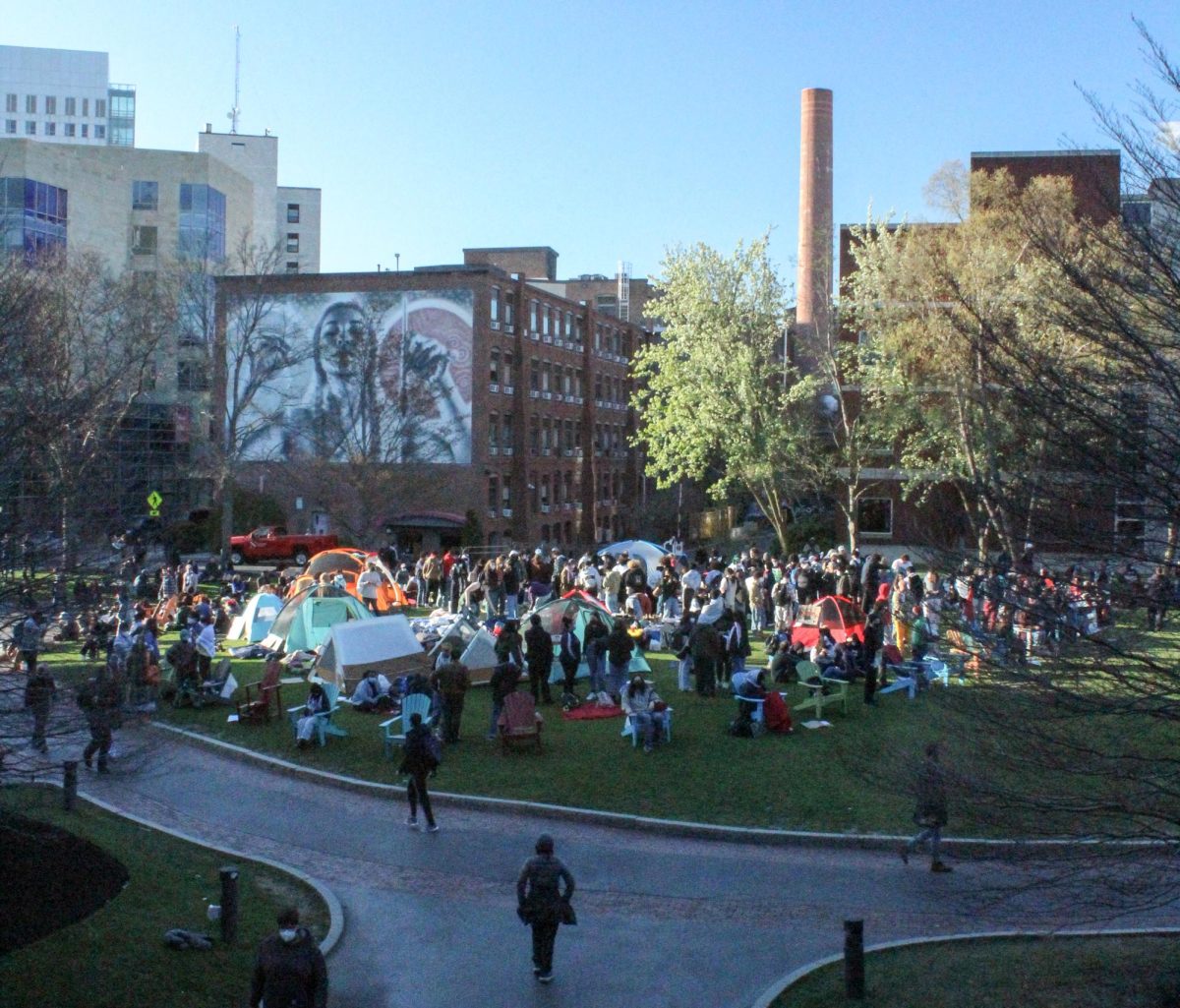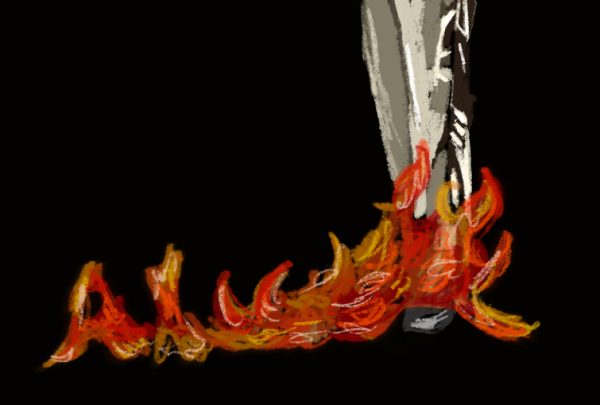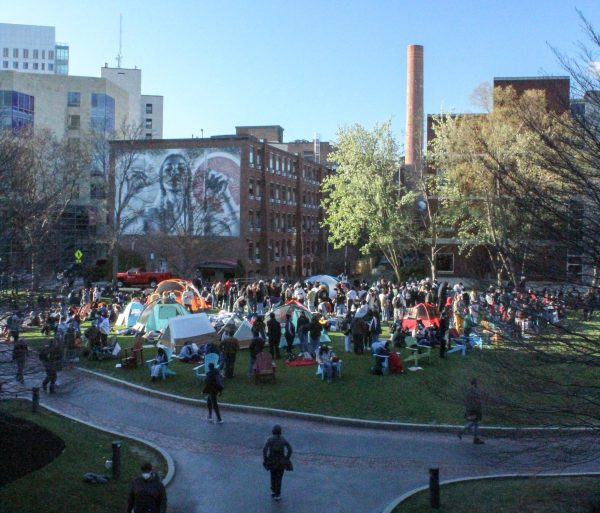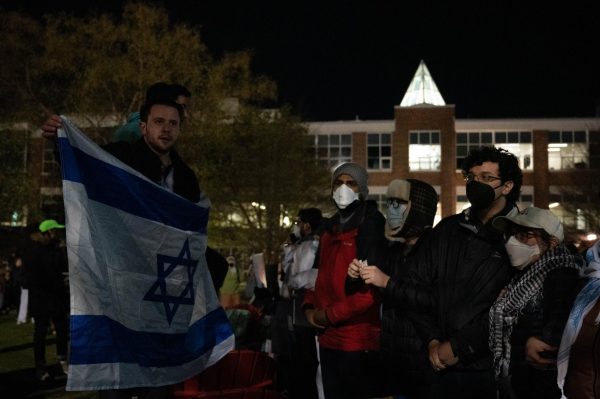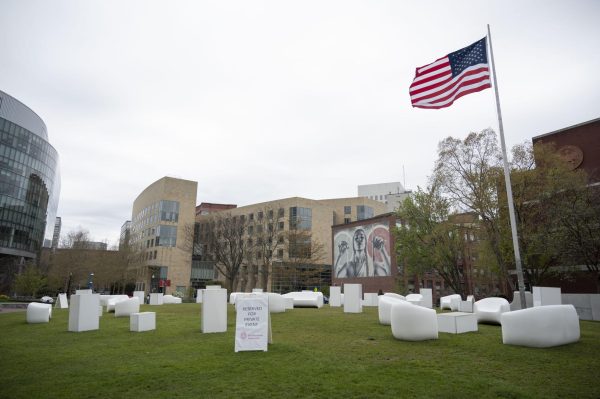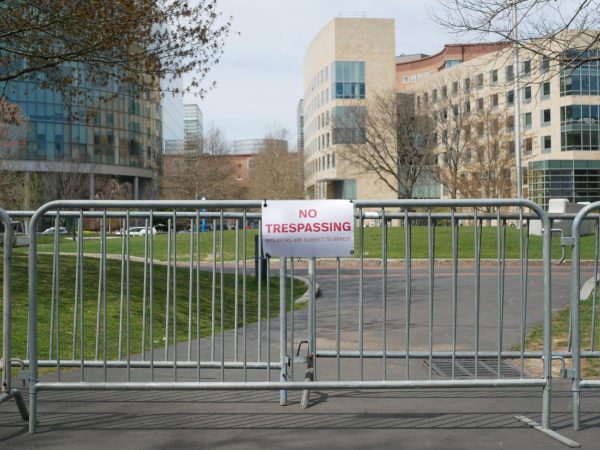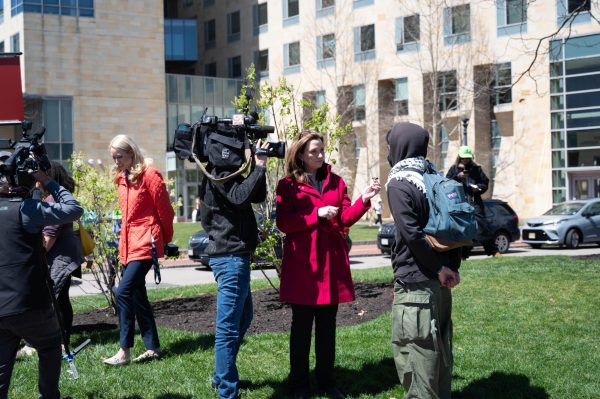Troublesome tracks: Students express their frustrations with the MBTA
Commuters watch as the green line arrives at the Northeastern T stop on Huntington Avenue.
February 6, 2019
The blistering cold and frigid temperatures of a Boston winter affect the city’s entire student population, but have an especially large impact on those who commute.
At Northeastern, freezing temperatures are not only a discomfort. They also have a negative effect on students trying to commute to campus for class.
Many students who live on campus make use of the underground tunnel system to get around. Students in residence halls on the other side of campus face walks of only five to 10 minutes to arriving at their destinations.
However, many students living off campus find it harder to get around. Walking outside in subzero temperatures is uncomfortable and sometimes dangerous, so many opt to use the T.
The Massachusetts Bay Transit Authority, or MBTA, is the public transit system many use to maneuver into, out of and throughout Boston. While it is effective in getting people from place to place, the T faces its fair share of problems in the winter and these have negative effects on students living off-campus.
Graduate architecture student Joshua Friedman said service lags noticeably when the weather turns cold.
“I used to commute all the way to South Boston for one of my co-ops and you could tell the summer from the winter. It was always abysmal during the winter,” Friedman said. “Particularly if you used the Green Line. The trains would always get stalled, so it was terrible.”
The Green Line is one of two lines that runs through Northeastern’s campus, and it takes students to popular off-campus residential neighborhoods Mission Hill and Roxbury, among others. It also runs the other direction through downtown and into Cambridge, where many students work co-op positions.
Friedman also compared the T to the subway system in New York, where he is from.
“[Boston] literally shut down for three days when we had those snow storms [in 2015]. The T would not run. So that’s the issue. You go to New York City and they’ll get everything running again within 24 hours. Here, they can’t do that.”
Fifth-year math and finance major Shreya Viswanathan, who lives on Massachusetts Avenue near its intersection with Columbus Avenue, also said the T is different during the winter.
“The trains take a lot longer to come,” she said. “When I’m on the Green Line, the delays are super bad. The Orange Line is usually okay, but things are just generally slower.”
The Orange Line is the other line with a stop on the NU campus; it runs from Jamaica Plain (another residential area with a student population) through NU and through downtown to Oak Grove.
The problems with commuting to school are not exclusive to upperclassmen. Some first-year students at Northeastern, like Gillian Schlenner, live far off from the main campus due to a lack of university housing.
Schlenner, who previously lived in university housing on Commonwealth Avenue before requesting a move to West Village G, had to plan her time around the T.
“At Commonwealth I had to budget an hour to get here because the T, at least the Green Line, had no schedule for when [the trains] would come,” she said. “So we would wait anywhere from a minute to 15 minutes. And then because it’s above ground you have to stop at all the lights, so you could hit [all of them]. It would take 45 minutes sometimes to get [to campus].”
The T slows students trying to commute to school, and it also negatively impacts those who need to commute for their jobs.
Susanna Hamilton, a graphic designer who resides in Brighton, said she prefers using her car instead of the T because of the constant delays.
“I much prefer to use my own car, especially during winter and during periods with a lot of rain,” she said. “It’s not just snow that slows down the T, for some reason rain seems to be a big factor too.”
The MBTA plans to completely replace the vehicles on the Red and Orange Lines in order to address some of their issues, but riders may not see complete benefits of the project until 2022.






